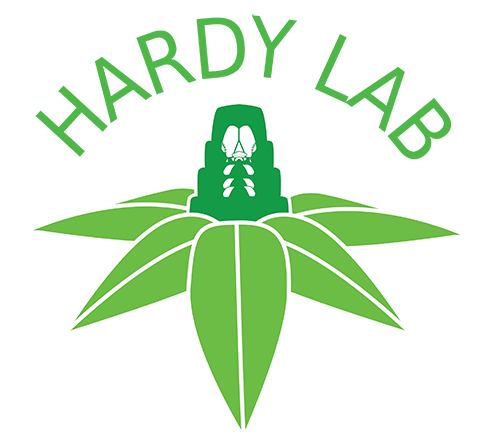Valid Names Results
Platylecanium palmae Hodgson, 2025 (Coccidae: Platylecanium)Nomenclatural History
- Platylecanium palmae Hodgson 2025a: 182. Type data: SULAWESI: Sulawesi Utara, Dumoga-Bone National Park, Clarks Camp, on "Palmae - poss., Calamus), 5/10/1985, by J.H. Martin. Holotype, female, type designation unknown Type depository: London: The Natural History Museum, England, UK; accepted valid name Notes: Paratypes ♀♀: as above, labelled paratype (1/1 adf, good) (NHML); also Platylecanium / palmae / Hodgson / paratype ♀♀; right label: Ratan Palm / Dumoga-Bone n.p. / SULAWESI UTARA / approx. 1140 m. alt / Clarks Camp area / 10.v.1985 / J.H. Martin 4936A (1/2 adff, good) (NHML).
Common Names
Ecological Associates
Associates:
Families: 1 | Genera: 1
- Arecaceae
- Arecaceae | Hodgso2025a
Geographic Distribution
Countries: 1
- Indonesia
- Sulawesi (=Celebes) | Hodgso2025a
Keys
Remarks
- Systematics: Platylecanium palmae is currently known only from the original collection in Sulawesi Utara off a species of palm. (Hodgson, 2025)
- Structure: Slide-mounted adult female body elongate oval and basically symmetrical, about 2.5 times longer than broad and rounded at both ends, length 3.7‒4.8 mm, width 1.9‒2.0 mm; anal cleft about 1/7th of body length. Platylecanium palmae. can be quickly recognized by the following combination of character-states: (i) antennae almost fully developed; (ii) marginal setae many, distributed rather evenly around the margin; (iii) each stigmatic cleft with 3 setae, median seta often shortest; (iv) multilocular disc-pores present in posterior 3 abdominal segments (V-VII inclusive); (v) preopercular pores about equally frequent around all four clear areas, and (vi) 4 or 5 pairs of setae present on anterior margin of anal cleft. In having almost complete antennae, (Hodgson, 2025)
- General Remarks: Detailed description and illustration in Hodgson, 2025.
Illustrations
Citations
- Hodgso2025a: description, diagnosis, distribution, illustration, taxonomy, 182-184


